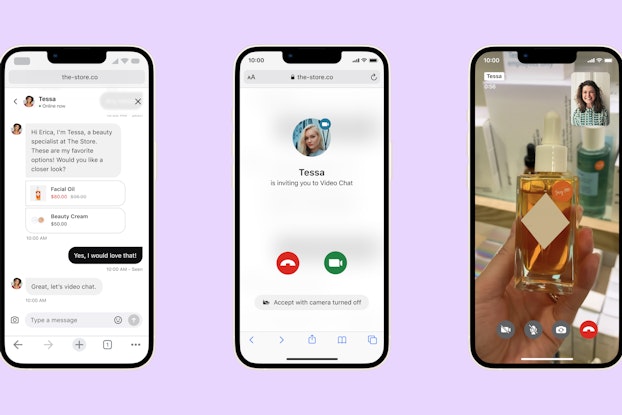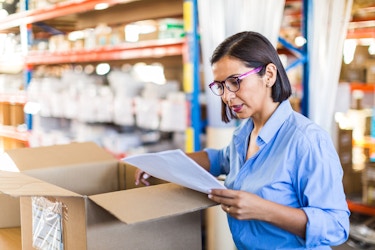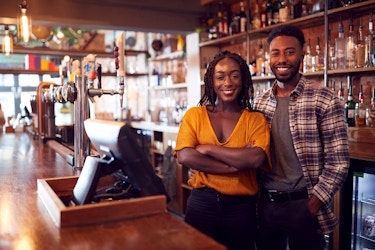
Key trends driving the rise of personalization for today’s consumer:
- Busy customers are looking for brands and products that can evolve along with their needs and changing preferences.
- The next generation of digital customer service will go beyond speed and convenience and prioritize unique, person-to-person interaction.
- Technology such as augmented reality (AR) and artificial intelligence (AI) helps brands create value-added experiences—like apps that allow customers to visualize how a piece of furniture would fit in their home—that go beyond the products themselves and help shoppers ensure they are getting goods and services suited to their distinct needs.
Consumer expectations just seem to keep growing. In a buying landscape with an overwhelming number of options, many shoppers are looking for brands, products, and experiences that feel as one-of-a-kind as they are. As more consumer interactions take place online, personalization becomes the key to delivering experiences that stand out and resonate with consumers in any category.
Here’s how consumer brands – from subscription meal service Gobble to major retailers like Walmart – have delivered personalized experiences and achieved growth in a field of ever-intensifying competition.
Differentiating with customized, mix-and-match product options
When the meal kit category boomed in the wake of the pandemic, subscription service Gobble saw an unexpected influx of new members.
“The increase in order volume was so dramatic that Gobble urgently developed new software and processes to handle multi-box orders,” Founder and CEO Ooshma Garg told CO —. “Additionally, Gobble developed food product innovations for the new consumer normal of remote work and flexible work.”
Internal research found that 78.5% of Gobble subscribers reported that the pandemic affected how they shopped for and prepared food, including when and how often they ate throughout the day.
And as competition in the meal-kit space heated up, the company focused on enabling consumers to customize their meals to win market share.
In 2021, for example, Gobble added a “Personalize It!” feature, which allowed subscribers more flexibility to customize their meals with their preferred protein, or to mix and match extra proteins, sauces, salads, and side dishes.
The moves appear to have paid off: Over the past few years, the company has seen a 200% increase in the basket size for it’s a la carte non-dinner menu items, Garg said.
[Read more: CEOs of 3 Food Startups Dish on the Trends Driving Their Success]
In a buying landscape with an overwhelming number of options, many shoppers are looking for brands, products, and experiences that feel as one-of-a-kind as they are.
Imbuing online shopping with a human touch
The buy-now, pay-later (BNPL) phenomenon, the modern-day version of layaway, has taken the retail world by storm, led by services like Klarna that allow customers to pay for purchases in installments.
As Klarna’s base of users and retail partners grows, the company last year rolled out a virtual shopping tool that serves the heightened demand for personalized e-commerce experiences with a human touch. “The first wave of e-commerce was all about convenience,” Chief Marketing Officer David Sandstrom told CO—. “The next wave of e-commerce is going to be about experiences and social interaction.”
The digital tool connects online shoppers with store associates and brand experts, who can demonstrate products using videos or photos. It is designed to give shoppers the individualized attention of in-person shopping without the need to set foot in a physical store.
Brands leveraging Klarna’s virtual shopping tool (which include companies such as Levi’s and Hugo Boss), have seen that having a live interaction with a store associate can boost conversion rates – the number of customers who complete a purchase after browsing – by as much as 1,000%, Sandstrom said.

Ushering in next-generation, interactive customer service
Nestlé turned to artificial intelligence to help its Toll House cookie brand deliver better customer service and stand out from competitors amid a post-pandemic home baking boom.
The brand introduced AI-powered avatar “Ruth,” Toll House’s resident Cookie Coach, to improve upon its existing offerings when it came to giving consumers baking advice.
“When we were thinking about innovation or breaking through the noise, here is something that is novel and fun, but also provides utility and a solution,” Orchid Bertelsen, the former Head of Digital Strategy and Innovation at Nestlé USA, told CO—.
This photorealistic and interactive digital assistant is designed to offer a unique experience for each user. Ruth answers baking questions, troubleshoots issues in the baking process, and helps home bakers develop their own personalized cookie recipes.
“That's kind of the Holy Grail of innovation,” Bertelsen said. “You want something that hasn't really been done before, especially in your space, and that enhances the overall consumer experience with your brand. This experience really differentiates Toll House from the rest of the baking category.”
[Read more: Nestlé Toll House Debuts AI ‘Cookie Coach’ Amid Home Baking Boom]

Tapping AR tech to deliver a custom-fit shirt or sofa
Depending on the category, generating custom product for each consumer is nearly impossible to scale. To achieve personalization in categories like home and apparel, digital fit solutions are the next best thing.
Walmart, the nation’s biggest retailer, made headlines with its 2021 acquisition of tech startup Zeekit, which recreates the fitting room experience in a digital space. Now shoppers on Walmart’s app and Walmart.com can generate a 3D representation of themselves by uploading an image, then try outfits on their digital avatar to gauge how an item will look on their flesh-and-blood selves.
According to Denise Incandela, Executive Vice President of Apparel and Private Brands for Walmart U.S., this solves for one of the biggest problems of online shopping: “understanding how an item will actually look on you,” she said in a company blog post.
[Read more: 5 Tech Trends Changing the Way We Buy Fashion and Food to Home Goods and Travel Jaunts]
The home goods and furniture category has also embraced augmented reality — such as apps that allow customers to see how a piece of furniture would fit in their space using just a smartphone – in a major way. Many big retailers have invested in AR, evidenced by Target’s See It in Your Space, Amazon’s View in Your Room, and Crate and Barrel’s View in My Room digital tools.
“Personalization without the wait is being accomplished in a number of ways,” said Jonah Ellin, Chief Product Officer at 1010data, a retail data analytics firm, “ranging from custom-fit [merchandise] derived from photos captured on mobile devices to brands enabling customization and design online so that customers can plan their own look and try it out virtually.”
CO— aims to bring you inspiration from leading respected experts. However, before making any business decision, you should consult a professional who can advise you based on your individual situation.
CO—is committed to helping you start, run and grow your small business. Learn more about the benefits of small business membership in the U.S. Chamber of Commerce, here.








